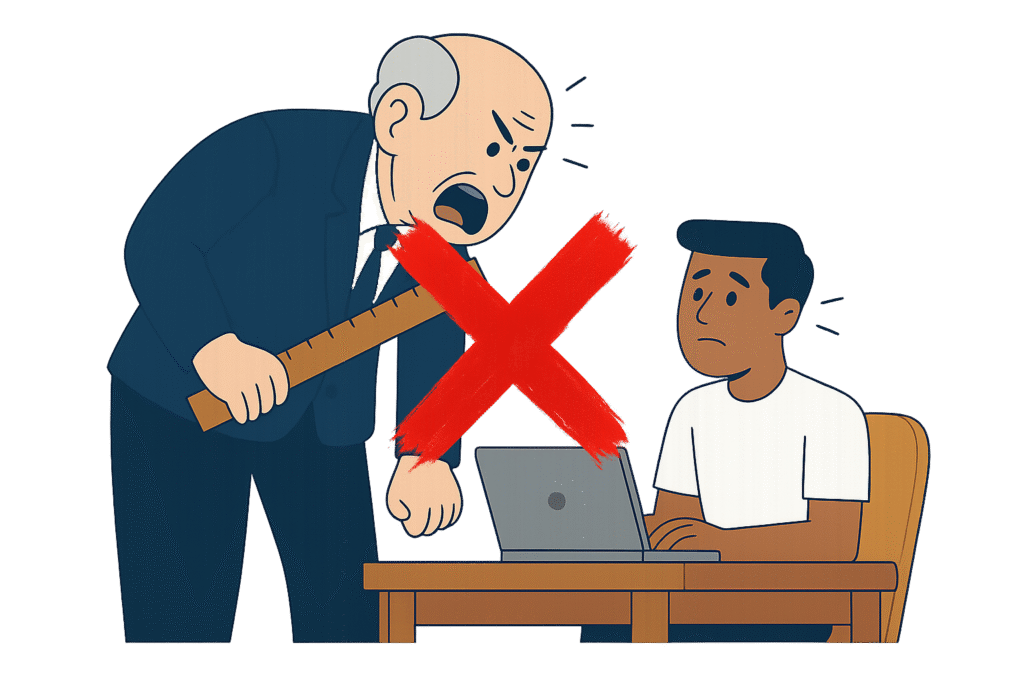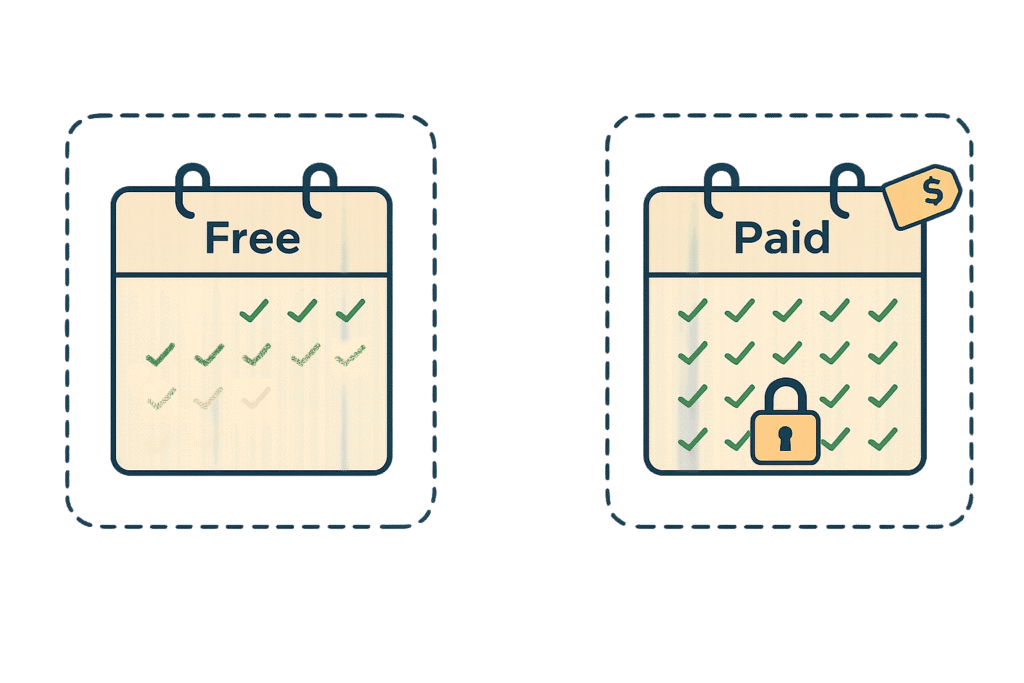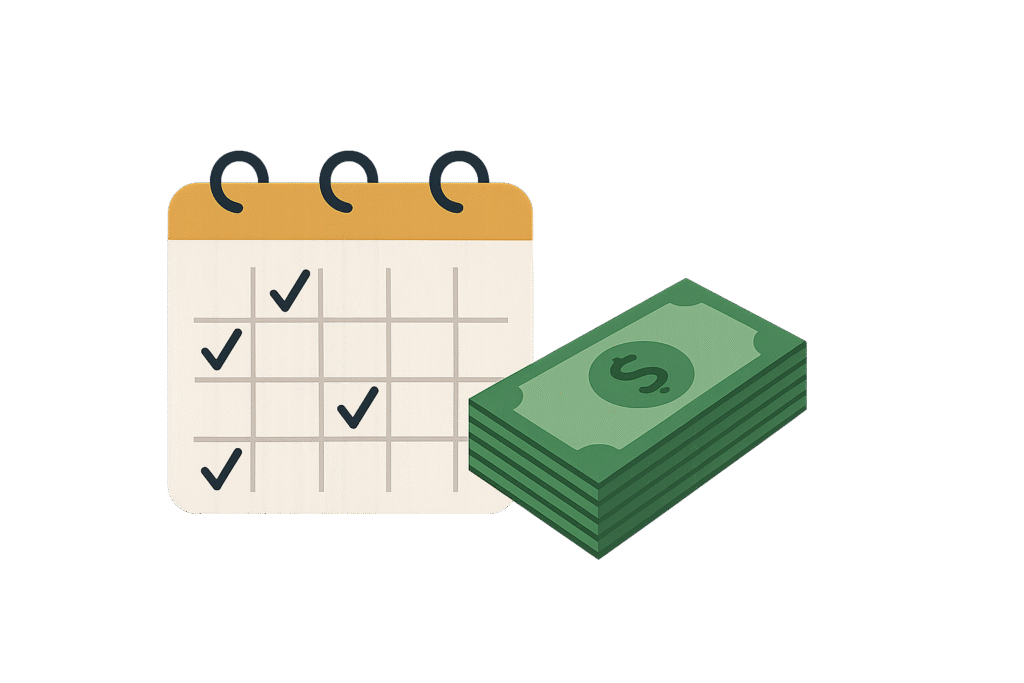If the idea of paying someone to keep you on track toward reaching your goals sounds strange or even uncomfortable, you’re not alone. Many people ask, “Why would I pay for accountability? Isn’t that just being bossed around, micromanaged, or policed?” Yet this assumption that an accountability partner is a glorified drill sergeant misses what the relationship really delivers.
Bossed Around or Supported? Redefining the Accountability Partner
A good accountability partner doesn’t hover above you with a metaphorical ruler. Instead, they stand beside you, bringing structured check‑ins, an outside perspective, and professional distance that friends and family rarely provide. Respect, not hierarchy, is their default. If clients felt talked down to, most would cancel after a week. AccountaPartner’s own retention data backs this up: people stay because the tone is collaborative, not parental.

Focus on Results, Not the Method
Think about vaccination. A nurse gives you a diluted dose of the very disease you want to avoid. On the surface, that sounds ridiculous, even backwards, yet vaccines have saved millions of lives by training the immune system in a safe way.
Hiring an accountability partner follows the same paradox. The added scrutiny can feel like extra pressure, the last thing you think you need, but that carefully measured attention is what strengthens follow‑through, shortens detours, and gets you to your goals sooner than travelling solo.
Why Paying for Intangibles Is Already Normal
Placing a price tag on a service can feel slippery. There’s no packaging, no weight in your hand. Too many self-proclaimed gurus have trained us to distrust online promises. After years of shady or questionable offers selling “get-rich-quick” schemes, pseudo-expert webinars, miracle morning routines, and overpriced courses and programs, it makes sense to be skeptical. But that doesn’t mean all coaching or services are cut from the same cloth.
Consider the cinema. A night at the movies costs you $15 and two hours and leaves you with no physical object. And yet, audiences still pour billions into theatres each year for the laughter, awe, or shared suspense. You pay for an experience, an emotion, or a change in behavior. How to firmly set the value of this then? Hard to say. But if after watching the movie, you’re glad you went, then maybe it was worth at least the $15.
Even tangible goods are really emotion delivery devices. What are you actually buying when you buy a house? Is it bricks, drywall, copper wiring, and roofing tiles? Or is it the security of having your own private space, the warmth of a place where social gatherings happen, and the comfort of knowing your family can sleep safely?

What about cars? If getting from point A to point B were all that mattered, wouldn’t we all be driving $10 000 old clunkers? In theory, any second‑hand hatchback covers mobility. In practice, many of us invest far more because the vehicle also signals achievement, identity, and pride. What you drive can say, “I’ve made it”. What you can’t drive can whisper the opposite.
Viewed through that lens, an accountability partnership is no stranger than any other purchase built on feelings. But unlike most emotionally-driven purchases, it doesn’t stop there. It also delivers measurable results.
You pay for the relief of knowing you’ll follow through and the quiet confidence that your goals are finally moving from wish list to reality. That payoff isn’t abstract. It’s visible. Deadlines stop slipping. Habits shift. Revenue grows. But more often than not, the biggest change happens inside: people start to trust themselves again. That’s not just worth paying for. That’s priceless.
How to Calculate the Real Value of an Accountability Partner
When the difference isn’t obvious, physicists often connect the dots by taking a variable to its limit. It’s called the limiting-case test: shrink it to zero or stretch it to infinity and watch how the system behaves. Unsure whether air resistance actually affects falling speed? Imagine dropping a sheet of paper as-is versus crumpling it into a tight ball. One case flutters forever; the other plummets. We’ll adopt the same edge-case mindset in the next sections to properly illustrate the contrast.
Level 1: Simple Action Count
In absolute terms, what changed? Did I act? That’s the simplest possible measure. Think about two people: one gets out for a single 10-minute jog this month. Another runs every day without missing a beat. Both technically “did something”. But the scale and commitment are worlds apart. However, this level offers only a limited view as context doesn’t enter the equation.
Level 2: Size of the Delta
Now we are starting to put things into perspective. How big was the shift, from who you were to who you’re becoming? Let’s reexamine the same two people. But this time, look closer.
One of them hadn’t moved in years. They didn’t own shoes fit for exercise, had to buy a pair, and then carve out time from a packed or chaotic day just to make it outside. For this person, that 10-minute jog might be as meaningful as a marathon.
The other has been doing 5 a.m. workouts for a decade. Another run? Just a minor adjustment. Or something they would have done anyway.
Now ask yourself: who really changed?
Effort matters, too. If your entire system screams “no” and you still get moving, that single jog might reflect serious personal growth. But if it came easily, without resistance, then the shift might not be worth much, even if the numbers look impressive. Sometimes the value lies in how far you had to stretch, not how far you traveled.

Level 3: Financial Context
Cost is always relative to resources. Picture those same two people. Only this time, we shift the lens to money.
One is Jeff Bezos. He pays $50,000 to start jogging once a month. The other is a man living on the street. He pays $20 to get out there daily.
For the billionaire, it’s background noise. For the other guy, it’s his next three meals.
The action is the same. But the stakes? Entirely different.
This is where value becomes deeply personal. What can you afford? What are you trading for it? For one person, $200 a month could mean skipping a few luxuries. For another, it could be make-or-break. Always measure price against your real resources and what that investment unlocks.
Level 4: Personal Values
Finally, what does the action mean to you?
Back to our two joggers for the last time. One sees fitness as trivial, maybe even cringey. To them, jogging every day feels like try-hard behaviour, something they do with a shrug, if at all. Here, hitting your goals in this area might feel empty.
For the other, it is everything. To them, being physically strong means being alive, being in control, being worthy. Jogging isn’t just healthy. It’s how they measure their own success in life.
Same action. Wildly different meaning.
This final level is about personal alignment. When your effort fuels what matters most to you, even small wins can feel enormous. And that’s a kind of return no spreadsheet can calculate.
Paid vs Free: Choosing the Right Fit
Free communities and peer-to-peer services like Focusmate or study-with-me livestreams are fantastic for light structure. They shine when you need a quiet sense of company and already possess strong self-awareness and motivation.
But if follow-through matters deeply, a paid accountability partner entering the scene becomes extremely valuable.
Why? Because paying changes how you show up. The moment money is on the line, priorities shift. Sessions feel non-negotiable. Deadlines stick. People commit. In fact, it is often recommended to pay for accountability, even if just a little, because payment makes you care. Free commitments tend to fade. But when you invest, even modestly, the relationship and the results gain weight.

That’s where a service like AccountaPartner adds real value:
- Sessions are locked in. With most tools, it’s up to you to show up. Here, it’s scheduled and enforced. We call you whether you’re motivated or not. Especially when you’re not. And that’s when it matters most.
- You get structure, not just company. You get progress tracking, adjustments, and professional support.
- And the stakes? Often high: launching a business, making a life change, or simply getting your habits to finally stick.
Paid doesn’t always mean better. But it nearly always means you’ll take it more seriously. And that alone can make the difference between “I meant to” and “I did”.
The Bottom Line on Paying for an Accountability Partner
Paying for accountability isn’t paying to be bossed around. It’s a strategic trade: money for momentum. Don’t stop with absolute measures. Instead, judge the proposition the same way you weigh any investment:
- How far did you move from where you were?
- How much internal resistance did you have to overcome?
- What did it cost you, relative to what you have?
- And what does it mean to you, personally?
When the movement, the stretch, the cost, and the meaning all outweigh the fee, the decision solves itself.



